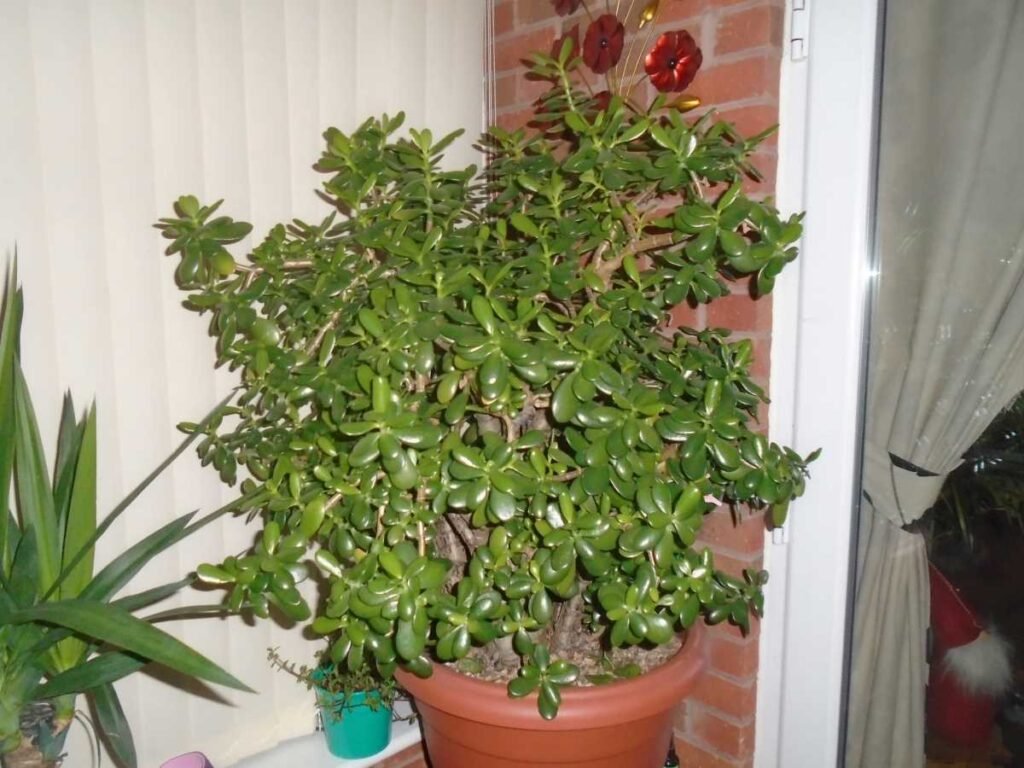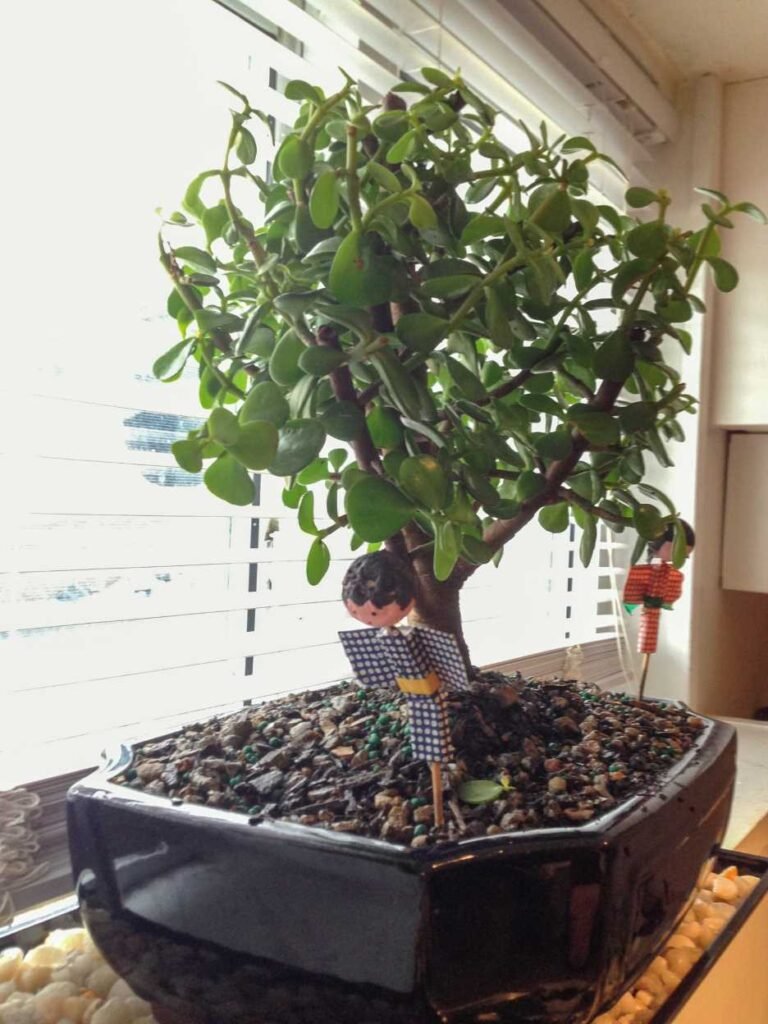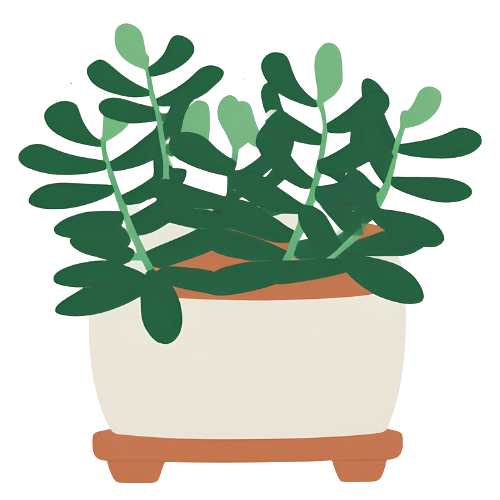Jade plants, scientifically known as Crassula ovata, are beloved by indoor plant enthusiasts for their striking appearance and robust nature. Originating from the arid regions of South Africa, these succulents have garnered various common names such as “money plant” or “lucky plant,” reflecting the cultural significance and myths tied to their presence. Characterized by their thick, fleshy leaves which are often glossy and jade-green, these plants can develop pink or white flowers under the right conditions.
The allure of jade plants lies not only in their aesthetic appeal but also in their reputation for being exceptionally hardy and low-maintenance. Their ability to thrive with minimal care makes them an ideal choice for both novice and seasoned plant lovers. Jade plants are highly adaptable to different environments, provided they receive adequate light and are not overwatered. This resilience, combined with their unique appearance, contributes to their widespread popularity.
One of the key aspects of maintaining jade plants is ensuring they develop a bushy, dense structure. A bushy jade plant not only looks fuller and more vibrant but also signifies a healthier growth pattern. Achieving a bushy appearance involves understanding the plant’s growth habits and applying specific care techniques. This can involve strategic pruning, appropriate watering practices, and ensuring optimal light conditions. These practices not only enhance the plant’s visual appeal but also promote overall health and longevity.
For those looking to enrich their living spaces with nature’s charm, mastering the art of how to make jade plants bushy is a rewarding endeavor. This guide aims to equip you with the knowledge and techniques necessary to cultivate a thriving, lush jade plant that can be a centerpiece in any indoor garden.

Table of Contents
Understanding Jade Plant Growth Habits
Jade plants (Crassula ovata) exhibit distinct growth patterns that vary significantly depending on their environment. In their native habitats of South Africa and Mozambique, these succulents thrive in well-drained, rocky soils and receive abundant sunlight. Such conditions foster a robust and bushy growth habit characterized by thick, fleshy leaves and a sturdy trunk. Conversely, when grown indoors, jade plants face variable conditions that can influence their shape and size.
Light is a critical factor in determining the overall health and bushiness of a jade plant. Optimal growth occurs with plenty of bright, indirect sunlight. Insufficient light can lead to leggy growth, where stems elongate and become weak, causing sparse foliage. To counteract this, placing your jade plant near a south or west-facing window can help ensure it receives adequate light, promoting a fuller, bushier appearance.
Watering practices also play a crucial role in jade plant health. These succulents are drought-tolerant and prefer to be watered deeply but infrequently. Overwatering can cause root rot, leading to poor growth and sparse foliage. It is essential to allow the soil to dry out completely between waterings to mimic the plant’s natural arid environment. Additionally, using well-draining soil, such as a cactus or succulent mix, helps prevent excess moisture retention, promoting healthy root development.
The size of the pot can also affect jade plant growth. A pot that is too large can hold excess moisture, increasing the risk of root rot, while a pot that is too small can restrict root growth. Choosing a pot that is proportionate to the plant’s size and has drainage holes is advisable to support healthy growth.
Common growth issues, such as leggy or sparse foliage, often indicate underlying problems such as inadequate light, improper watering, or poor soil conditions. By addressing these factors and providing optimal care, you can enhance the bushiness and overall health of your jade plant, ensuring it remains a vibrant and attractive addition to your indoor garden.
The Importance of Pruning
Pruning plays a crucial role in ensuring jade plants develop a bushier, more attractive appearance. This horticultural practice not only shapes the plant but also stimulates new growth, leading to a fuller and healthier jade plant. Understanding how to make jade plants bushy involves knowing the right techniques and times for pruning.
The optimal time to prune jade plants is during their active growing season, typically from early spring to early summer. Avoid pruning during the dormant winter months, as this can stress the plant. Essential tools for effective pruning include sharp, clean pruning shears or scissors. Sterilizing your tools before use is vital to prevent the spread of diseases.
To begin, identify the areas that require pruning. Focus on branches that are overgrown, leggy, or crossing over each other. Start by removing any dead or damaged leaves and branches. For branches, make clean cuts just above a leaf node, which is where leaves attach to the stem. This encourages new growth from the cut point. When dealing with the main stem, be cautious and only prune it if necessary to maintain the plant’s shape.
Additionally, pinching off the tips of young branches can promote a bushier growth habit. Use your fingers or small scissors to remove the top growing tips, which will stimulate the plant to produce side shoots. This method is particularly effective for encouraging a denser foliage structure.
The benefits of pruning are manifold. Regular pruning helps maintain the shape and size of the jade plant, preventing it from becoming leggy and unkempt. It also encourages new growth, as cutting back branches and leaves signals the plant to produce new shoots. Moreover, pruning allows for better air circulation and light penetration, reducing the risk of pests and diseases.
By incorporating regular pruning into your jade plant care routine, you can ensure your plant not only looks aesthetically pleasing but also thrives with lush, bushy growth.
Optimizing Light Conditions

Light plays a crucial role in the growth and bushiness of jade plants. Understanding the ideal light conditions can significantly enhance their overall appearance and health. Jade plants thrive in bright, indirect light, which helps them develop a fuller, bushier form. Ideally, these plants should receive at least four to six hours of sunlight daily. However, it is essential to avoid placing them in direct, intense sunlight for prolonged periods, as this can lead to leaf burn and other damage.
Natural sunlight is often the best source of light for jade plants. Positioning them near a south-facing window usually provides the optimal light intensity. If a south-facing window is not available, an east or west-facing window can also be suitable, although the duration of light exposure might be slightly reduced. It is important to rotate the plant regularly to ensure even light distribution on all sides, preventing lopsided growth.
For those who lack sufficient natural light, artificial grow lights can be an effective alternative. LED grow lights, in particular, are energy-efficient and can be tailored to emit the appropriate light spectrum that jade plants require. Position the grow lights about 12 to 18 inches above the plants, and aim for 12 to 14 hours of light exposure daily. This setup mimics the natural light conditions and promotes bushy growth.
In various indoor settings, strategic positioning of jade plants can maximize light exposure. Placing jade plants on windowsills or near windows is ideal, but make sure to use sheer curtains if the sunlight is too intense. In rooms with limited light, using reflective surfaces like mirrors can help bounce light toward the plants. Additionally, consider moving the plants closer to the light source during winter months when daylight hours are shorter.
By optimizing light conditions, you can significantly influence how to make jade plants bushy and vibrant, ensuring they remain healthy and aesthetically pleasing throughout the year.
Watering Techniques for Bushier Growth

Achieving a bushier jade plant hinges significantly on proper watering techniques. Jade plants, known for their succulent nature, store water in their leaves, making them relatively drought-tolerant. However, improper watering can hinder their growth and overall health. Understanding the plant’s watering needs, including the correct frequency and amount, is crucial for fostering a healthy and bushy jade plant.
Generally, jade plants require watering every two to three weeks, but this frequency can vary based on the season and the plant’s environment. During the growing season, typically spring and summer, jade plants may need more frequent watering. Conversely, in the dormant periods of fall and winter, their water requirements decrease. It is essential to allow the soil to dry out completely between waterings to prevent root rot, a common issue caused by overwatering.
Overwatering is one of the most prevalent mistakes made by jade plant owners. Signs of overwatering include yellowing leaves, a mushy stem, and root rot. On the other hand, underwatering can also be detrimental, leading to shriveled leaves and stunted growth. Therefore, finding a balance is key. A good practice is to check the soil moisture by inserting your finger about an inch deep into the soil; if it feels dry, it’s time to water.
When watering, ensure the water reaches the root zone without flooding the plant. Water should be applied until it starts to drain from the bottom of the pot, ensuring the entire root system receives adequate moisture. Using a pot with drainage holes is essential to prevent water from sitting at the bottom, which can lead to overwatering issues.
In summary, understanding how to make jade plants bushy involves mastering the art of watering. By adhering to proper watering techniques—adjusting frequency according to the season, allowing the soil to dry out between waterings, and avoiding common pitfalls such as overwatering and underwatering—you can promote a healthier, bushier jade plant.
Soil and Fertilization
Creating an optimal environment for jade plants begins with the right soil mix. To achieve bushy jade plants, the soil must offer excellent drainage while being nutrient-rich. The ideal soil mix usually consists of a combination of succulent or cactus potting mix blended with perlite or coarse sand. This combination ensures that water can flow freely through the soil, preventing root rot and other moisture-related issues that can hinder plant growth.
Fertilization is another crucial aspect of promoting a bushy appearance in jade plants. Both organic and synthetic fertilizers can be effective, but they must be used judiciously. Organic options such as compost or worm castings provide a slow-release source of nutrients that support steady growth. Synthetic fertilizers, specifically those formulated for succulents, can also be beneficial when used correctly.
It’s essential to follow a balanced fertilization schedule. Typically, feeding jade plants every four to six weeks during the growing season, which spans from early spring to late summer, is sufficient. Using a diluted liquid fertilizer, such as a 10-20-10 NPK ratio, can provide the necessary nutrients without overwhelming the plant. During the dormant period in fall and winter, reduce or cease fertilization to prevent nutrient buildup and potential damage.
There are some important dos and don’ts when it comes to fertilizing jade plants. Do ensure the soil is evenly moist before applying any fertilizer to avoid root burn. Don’t over-fertilize, as excessive nutrients can lead to leggy growth and weaken the plant structure. Always follow the manufacturer’s instructions for the proper dilution and application rates.
By paying careful attention to soil quality and a balanced fertilization regimen, you can significantly enhance the bushiness and overall health of your jade plants. Consistent care in these areas will result in lush, vibrant growth that showcases the full potential of this popular succulent.
Repotting and Root Management
Repotting a jade plant plays a pivotal role in promoting its bushiness. Understanding the indicators that signify the need for repotting is essential for maintaining the plant’s health and encouraging robust growth. One primary sign is when the plant outgrows its current pot, often evidenced by roots emerging from the drainage holes or the plant becoming top-heavy and unstable. Additionally, if the soil appears compacted or waterlogged, repotting is advisable to ensure optimal root health.
Best practices for repotting jade plants involve selecting an appropriately sized pot, generally one that is one to two inches larger in diameter than the current pot. The type of pot is also crucial; terracotta pots are recommended for their porous nature, which helps prevent root rot by allowing better air circulation and moisture evaporation. Equally important is choosing a well-draining soil mix, ideally one formulated for succulents and cacti, to prevent water retention and promote healthy root growth.
The repotting process begins by gently removing the jade plant from its existing pot. Carefully loosen the surrounding soil to expose the roots, and inspect for any signs of root rot or damage. Trim away any unhealthy roots with sterile pruning shears. Position the plant centrally in the new pot, adding fresh soil around the roots to provide adequate support. Ensure the soil is evenly distributed and firmed down gently to eliminate air pockets.
Root health is a fundamental aspect of overall plant growth and bushiness. Healthy roots enable efficient nutrient and water uptake, directly influencing the vigor and structure of the plant. By regularly monitoring and managing root health through repotting, gardeners can significantly enhance the bushiness of their jade plants. Implementing these practices ensures that the plant remains robust and continues to develop a dense, attractive foliage.
Advanced Tips and Tricks
Mastering the art of making jade plants bushy involves understanding and implementing a few advanced techniques. One highly effective method is pinching, which entails removing the tip of the plant’s stem to encourage lateral growth. This simple yet effective technique redirects the plant’s energy towards developing a fuller, bushier appearance. Pinching should be done carefully, using clean, sharp tools to avoid damaging the plant.
Another advanced strategy involves the use of growth hormones. These products can be applied to the plant to stimulate more vigorous growth. Hormones like auxins can be particularly beneficial, as they promote cell elongation and division, resulting in a denser foliage. It’s crucial to follow the manufacturer’s instructions precisely to avoid over-application, which can harm the plant.
Strategic leaf removal is another technique seasoned gardeners employ. By selectively removing older, less productive leaves, you can direct more nutrients to the newer growth, fostering a bushier appearance. This method also helps in maintaining the plant’s overall health by improving air circulation and reducing the risk of disease.
Experienced gardeners advise regular pruning as an essential practice. This not only helps in shaping the plant but also encourages the development of multiple branches. Consistent pruning, combined with proper watering and adequate sunlight, can significantly enhance the jade plant’s bushiness.
Common mistakes to avoid include overwatering, which can lead to root rot, and inadequate lighting, which can cause the plant to become leggy. Jade plants thrive in bright, indirect light, and it’s vital to ensure they receive the right amount of sunlight.
Patience and consistent care are key when aiming to achieve a bushy jade plant. These plants are slow growers, and it can take several months or even years to see significant results. However, with diligent application of these advanced techniques, you can cultivate a healthy, bushy jade plant that adds a touch of green elegance to any space.
Conclusion
Cultivating a bushy jade plant requires a thoughtful combination of proper care techniques and an understanding of the plant’s unique needs. From optimizing light conditions and mastering watering practices to implementing strategic pruning and choosing the right soil mix, each step plays a crucial role in enhancing the plant’s lushness. Jade plants, with their distinctive appearance and robust nature, thrive best when they are provided with a balanced environment that mimics their natural habitat. Regular maintenance, including repotting and root management, further supports their healthy growth. By applying the advanced tips and avoiding common mistakes, you can nurture a jade plant that not only adds a touch of nature’s charm to your space but also stands as a testament to your gardening prowess. Patience and consistency are key, and with these principles in mind, you can enjoy the beauty of a vibrant, bushy jade plant for years to come.

